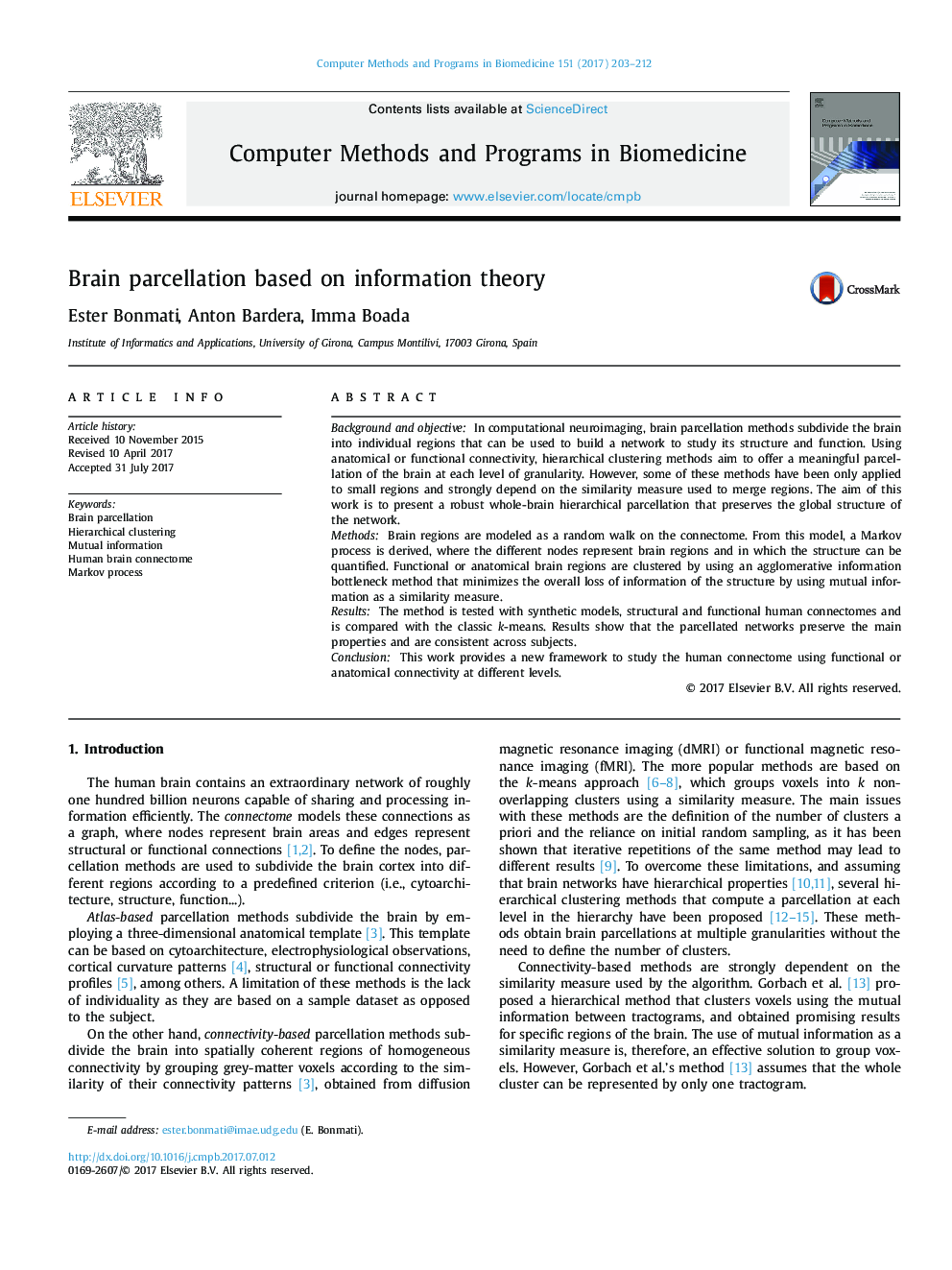| Article ID | Journal | Published Year | Pages | File Type |
|---|---|---|---|---|
| 4958017 | Computer Methods and Programs in Biomedicine | 2017 | 10 Pages |
â¢A whole-brain hierarchical parcellation method is presented.â¢The method can be applied to both structural and functional connectivity matrices.â¢The mutual information is employed as a measure of brain structure, which the method maximizes.â¢The method hierarchically reduces the complexity of the networks preserving the global structure.â¢Experiments are done with synthetic and human connectivity networks and compared with the k-means method showing a high robustness of the method.
Background and objectiveIn computational neuroimaging, brain parcellation methods subdivide the brain into individual regions that can be used to build a network to study its structure and function. Using anatomical or functional connectivity, hierarchical clustering methods aim to offer a meaningful parcellation of the brain at each level of granularity. However, some of these methods have been only applied to small regions and strongly depend on the similarity measure used to merge regions. The aim of this work is to present a robust whole-brain hierarchical parcellation that preserves the global structure of the network.MethodsBrain regions are modeled as a random walk on the connectome. From this model, a Markov process is derived, where the different nodes represent brain regions and in which the structure can be quantified. Functional or anatomical brain regions are clustered by using an agglomerative information bottleneck method that minimizes the overall loss of information of the structure by using mutual information as a similarity measure.ResultsThe method is tested with synthetic models, structural and functional human connectomes and is compared with the classic k-means. Results show that the parcellated networks preserve the main properties and are consistent across subjects.ConclusionThis work provides a new framework to study the human connectome using functional or anatomical connectivity at different levels.
